Tech Report
Rethink your reactor design
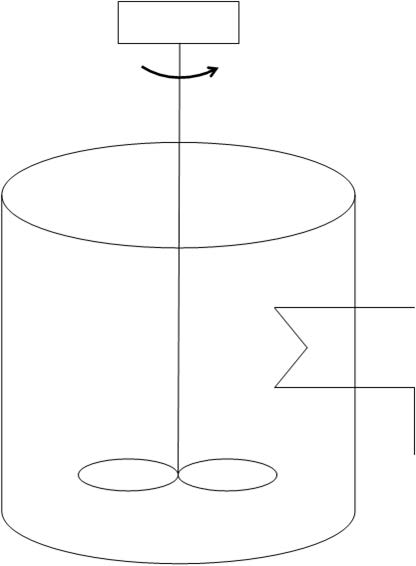
Technology Brief
Chemical processes accomplished in conventional stirred tank reactors can be optimized by switching to a multi agitator system capable of high speed dispersion or dissolution, as well as superior heat transfer and efficient turnover even at elevated viscosities.
Is your stirred reactor still efficient?
Traditional equipment used in carrying out chemical reactions consists of a batch vessel stirred by a low-speed impeller or turbine-type agitator. While classic stirred tank reactors are effective for straightforward liquid-liquid mixing requirements, yield and cycle time are not always optimized when the reaction depends on more complex mixing functions such as powder wet-out, dissolution, grinding and particle size reduction or emulsification. If you know your reaction time is relatively fast yet find the mixing operation clearly holding up production, consider if it`s time to update your reactor design.
Upgrade to a Multi-Shaft Mixer/Reactor
Multi-agitator systems are ideal for mixing-sensitive reactions that require a combination of laminar bulk flow, high speed dispersion and high shear homogenization. Called Multi-Shaft Mixers in the industry, these mixer/reactors are composed of two or more independently-driven agitators working in tandem. A low-speed anchor sweep blade complements one or two high-speed devices such as a saw-tooth disperser and/or a rotor/stator mixer. Depending on the configuration and horsepower on each agitator, aMulti-Shaft Mixer can handle a wide viscosity range - from water-like to several hundred thousand centipoise - without compromising batch turnover.
Advantages over conventional reactor systems
Aside from a viscosity standpoint, Multi-Shaft Mixers are also more efficient in terms of temperature control. The anchor agitator typically includes sidewall and bottom scrapers which greatly improve heat transfer between the heating/cooling jacket and the batch material.
For many applications, the level of homogenization that is consistently achieved in a Multi-Shaft Mixer is not typically possible in any traditional gently-stirred reactor. The high speed disperser enables fast incorporation of solids in large quantities. The rotor/stator mixer breaks down tough agglomerates, hastens dissolution and produces fine emulsions. Special design rotor/stators like the RossSolids/Liquid Injection Manifold (SLIM) Technology are even capable of sub-surface induction of hard-to-disperse or lightweight powders. The SLIM utilizes a unique ported rotor that generates an intense vacuum which draws solids right into the high shear zone of the mix chamber. This method of addition prevents hydrophobic powders from floating on the batch surface or forming lumps and agglomerates. To minimize dusting, the operator can use a "hose & wand" attachment and simply draw powders straight from the bulk container (see above photo).
Multi-Shaft Mixer Sample Configurations
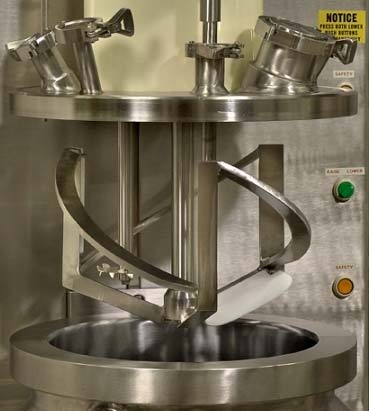
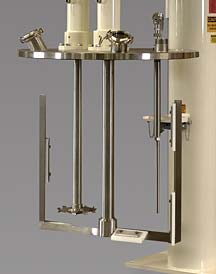
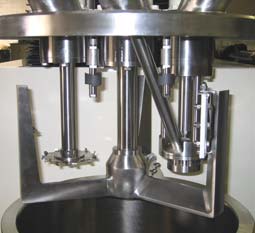
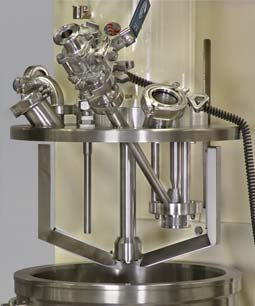
Sample Application: Conductive Inkjet Inks
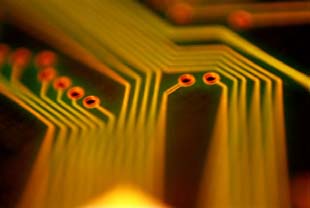
A 10-gallon Ross Dual-Shaft Mixer serves as a reactor in a production line for aqueous ink formulations.The finished products are tailored for use in printed electronics including computer monitors, TV screens, mobile phone displays, smart tags and solar cells.
The vacuum-rated mixer is equipped with a two-wing anchor and high speed disperser. A recirculation line is piped to the mix vessel, equipped with a centrifugal pump and inline filter. A built-in vacuum pump and mixer controls are also supplied as part of the turnkey reactor package.
The Dual-Shaft Mixer replaced an old, low-throughout process that required several transfer steps. In the previous process, the base liquid and polymer were combined in a glass reactor and agitated with a propeller for over 15hours. Upon completion of the reaction, signaled by a smooth lump-free mixture, the reacted material was then passed through a filter and degassed in a separate machine. The Dual-Shaft Mixer not only combined the mixing, dispersion, reaction, deaeration and filtration steps in a single vessel, it also dramatically reduced overall cycle time to less than 2 hours.